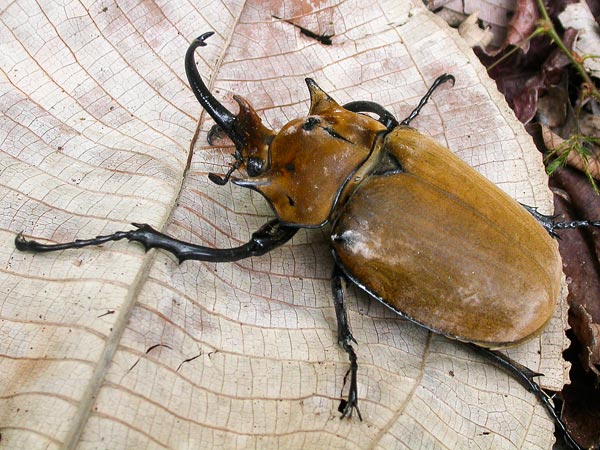We're open daily! View holiday hours
Science News
Arthropods and Biodiversity
December 17, 2012

The numbers are staggering:
10 years
102 researchers from 21 countries
129,000 specimens
25,000 species in a 6,000-hectare forest
…yielding an estimate of 6 million arthropod species on our planet.
Ready for the details behind the numbers?
In 2003 and 2004, a large team of scientists (see numbers above) led by the Smithsonian Tropical Research Institute on an endeavor called Project IBISCA-Panama, scoured Panama’s San Lorenzo rainforest for arthropods (which includes insects, spiders, and millipedes).
They sampled the forest from top to bottom from a construction crane, inflatable platforms, and balloons, climbing ropes through forest layers as well as crawling along the forest floor to sift soil and trap arthropods.
They then spent the next eight years identifying the 129,000 specimens collected within twelve 20-by-20 meter squares. They determined that within those specimens, there were over 6,000 species of arthropods. Using various models the team extrapolated the total number of arthropod species to 25,000 residing in the 6,000-hectare forest.
The research is published in the current edition of Science.
According to Science Now,
The study is the most extensive survey of insects, spiders, and their relatives ever undertaken and should help researchers get a better understanding of what factors influence biodiversity.
“This is a high number as it implies that for every species of vascular plant, bird or mammal in this forest, you will find 20, 83, and 312 species of arthropods, respectively,” explains lead author Yves Basset.
“If we are interested in conserving the diversity of life on Earth, we should start thinking about how best to conserve arthropods,” adds Tomas Roslin, one of 35 co-authors.
“Another exciting finding was that the diversity of both herbivorous and non-herbivorous arthropods could be accurately predicted from the diversity of plants,” says Basset.
“By focusing conservation efforts on floristically diverse sites, we may save a large fraction of arthropods under the same umbrella. Further, this strengthens past ideas that we should really be basing estimates of global species richness on the number of plant species,” stresses Roslin.
For some amazing images of these arthropods and the collection process, please visit National Geographic.
Image: Thomas Martin, Jean-Philippe Sobczak, and Hendrik Dietz, T.U. Munich